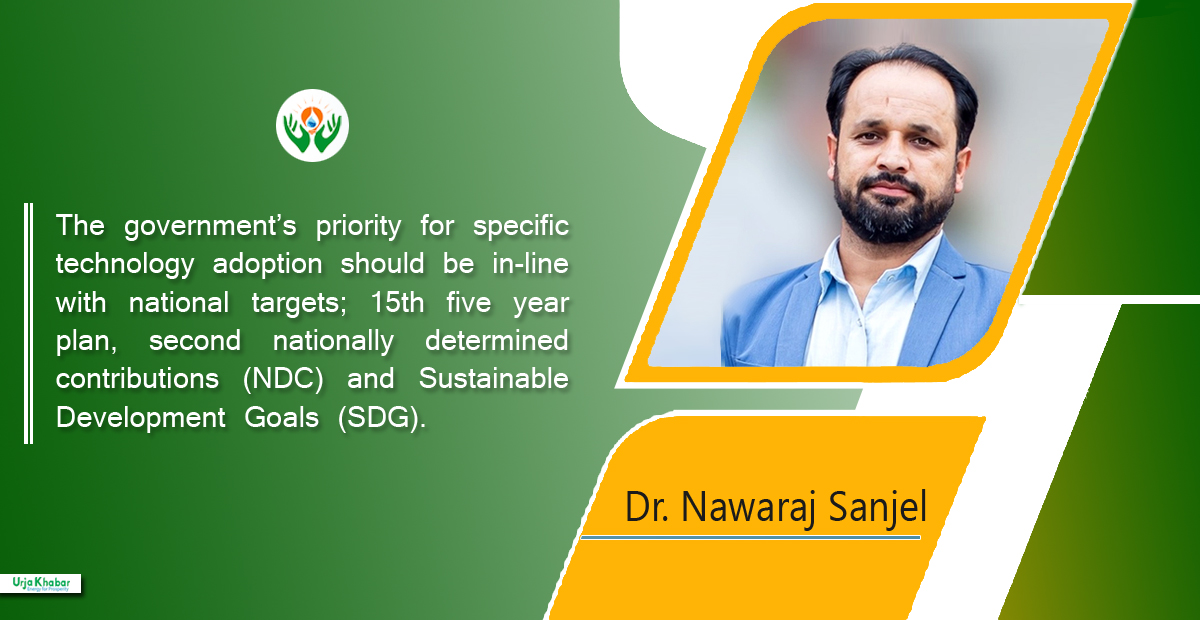
Nepali families used to rely heavily on traditional fuels such as firewood, crop residues, cow-dung etc. as sources of cooking fuel. Centre point of attraction is the abundant availability with almost no cost but just at the expense of readily available human labour. The major drawback of such fuels is the massive indoor air pollution leading to significant deaths and the chronic diseases not limiting to respiratory tract issues and the visual disparities. In 2019, as per an article published, 182.5 per 100,000 population died due to chronic lung disease caused by air pollution.
Secondary and tertiary impacts are on pregnant females and the babies inside their womb, mental health, focused and time-consuming cooking are among other issues. However, pursuit for cleaner cooking fuel with low cost technology led to invention of biogas technology and the system. A technology that utilizes organic waste such as, faecal waste, animal dung, kitchen waste as the fuel to generate bio-gas where organic fertilizer is the bi-product. Bio-gas is used for cooking and in some cases lighting. Simultaneously, it is very helpful in proper management of organic waste generating the organic fertilizers leading to high crop yields. In contrast, cultural issues (cooking food with faecal waste) at the central, remained as the major hindrance for wider uptake. Also, it is still not easy to manage the upfront cost for low income families to install the system.

Ministry of Energy Water Resources and Irrigation (MoEWRI) through Alternative Energy Promotion Centre (AEPC) has been extending the subsidies for wider uptake of biogas systems; both at the household and the institutional level. This has marked as one of the most successful subsidy interventions of AEPC. However, many households are still unable to adopt those biogas systems due unable to manage own contribution despite deep desire to adopt the system. The biogas system is exceptionally suitable basically for terai belt of Nepal with sufficient temperature for the system and the livestock adoption culture. In due course of time, LPG started penetrating our households gradually displacing the bio-gas systems. Adoption of LPG started becoming a matter of pride, however, biogas system remained as a source of energy for poor families.
With provision of subsidies, GoN seems to be backing up for the wider uptake of LPG. In contrary, LPG is one of the major contributors for the widening the ever increasing trade gap. The era of LPG emerged with government support with subsidy, however, the bio-gas systems could not take a good leap compared to LPG. LPG and bio-gas, both are clean cooking, leaving very minimal indoor air pollution. However, LPG is an imported fossil fuel and bio-gas a locally generated renewable and sustainable fuel with other numerous benefits. Despite the fact, bio-gas could not compete the pace of LPG. But these days, some large biogas plants are being installed with multiple supports for viability gap funding. Still business sustainability is yet to be witnessed.

Now the electric cooking era is already introduced to the Nepalese households. The current societies are widely taking up electric cooking. The fuel source is the electricity, the most clean and sustainable source and is also locally generated. However, we still lack enough infrastructure and limited generation in dry seasons. Nevertheless, numerous development agencies are speeding up and promoting electric cooking with subsidy provisions. However, the point of promoting electric cook stoves with subsidies is still debatable; sort of persuaded adoption, despite lack of reliable supply and the weak infrastructure. More importantly, wider adoption of electric cooking up-surges the peak load. That is why many times, NEA suggests not promoting the electric cooking specially in the areas already with overloaded transformers and the distribution lines. In contrary, in specific load centres with underutilized transformers, NEA recommends for wider promotions to increase the electric cooking. Additionally, the persuaded adoption with subsidies may lead to dumping of the electric cookstoves in the corner, unused. All of us know the dumping of metallic stoves. Let’s not encourage to repeat the case.
In the other facet, what’s about continuing electric cooking with no subsidies and letting market system to drive itself? The concept is being utilized by Sustainable Energy Challenge Fund (SECF), a financial instrument being implemented by AEPC/CREF (Central Renewable Energy Fund). SECF conceptualizes and implements market approach for the adoption of induction cooktops. This vows the dynamic approach of AEPC over the conventional subsidy approach. Apart from these institutions and programmes that are speeding up to develop a market system, others are advocating subsidy in the name of market system development.
Such dual intervention modalities are creating confusion among the early adopters. Many potential adopters are reluctant to purchase the system from market, because, numerous in their vicinity are getting it in subsidized rate. However, the so-called subsidized rate and the market rate does not vary much. Is the subsidy really strengthening the market system? If not, is that subsidy being reached to the target household level? If not, the approach may be distorting the market. In this context, government’s roles in regulating the market is crucial. In due course of time, speeding up the pondage hydel projects enhancing the distribution and transmission networks would double the benefit.
Another school of thought could be shifting the subsidy of LPG to biogas? The current climatic condition of increasing temperature of Nepal seems increasingly favourable for biogas systems. If every household installs a biogas plant in major cities will lead to dramatic reduction in the peak load and contributes in organic waste management. The potential saving of electricity by adoption of biogas systems can be utilized at needy times (peak time) or areas (urban).
Technically this is referred as Peak Chopping and Valley Filling; meaning minimizing the peak load and utilizing that with other needy areas. This can be achieved through massive interventions by awareness and demonstrations activities. Financial justice among different fuel sources should be evidently justified and be promoted as loan products by local financial institutions. And the various challenge funds may contribute as viability gap funding, as SECF is contributing. Given the situation, coordination and cooperation among NEA and AEPC is crucial.
Adoption of biogas will reduce the import of LPG and subsequently lead to manage the national trade gap. Additionally, let’s think, if the government making mandatory to have a biogas system for approval for house-map, at least in some highly potential areas? The relevant government agencies should clearly portray a picture on how a family would select cooking fuel among, firewood, bio-gas, LPG or Electric cooking and why? The government’s priority for specific technology adoption should be in-line with national targets; 15th five year plan, second nationally determined contributions (NDC) and Sustainable Development Goals (SDG). The priorities should be effective in materializing the target of net zero emission and strategies should be formulated accordingly.
The proposed approach needs coordination among numerous institutions such as NPC, MoEWRI, MoFE, NEA, NOC, AEPC and the development partners. Only with concentrated and the combined efforts of such entities, an integrated holistic energy planning is possible avoiding the potential duplications which may drag back the overall process of development. Let’s stand together and join hands for such an integrated planning.
Dr. Sanjel holds a Ph.D. in Energy Planning and is energy professional for last one and half decade.
